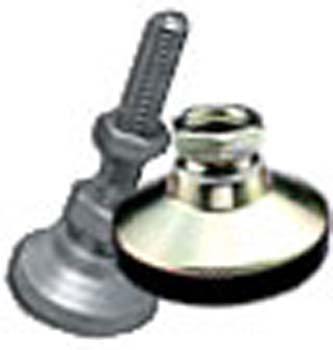Leveling Feet and Mounts
Leveling feet and mounts are essential components used in various industries to provide stability, balance, and precision to machinery and equipment. These versatile devices enable easy adjustment of height, leveling on uneven surfaces, and vibration isolation, ensuring optimal performance and safety. In this comprehensive product description, we will explore the world of leveling feet and mounts, their types, materials, applications, and the indispensable value they bring to a wide range of industries.
What are Leveling Feet and Mounts?
Leveling feet and mounts, also known as leveling pads, adjustable feet, or machine mounts, are specialized components designed to support and level equipment while compensating for uneven surfaces. They are commonly used in applications where stability, vibration control, and precise positioning are critical.
Types of Leveling Feet and Mounts
Leveling feet and mounts come in various configurations to suit different requirements. Some common types include:
- Adjustable Leveling Feet: These feet feature a threaded shaft or stud that can be extended or retracted to adjust the height and level the equipment. They often come with a swivel base to accommodate angular adjustments.
- Fixed Leveling Feet: Fixed feet are non-adjustable and provide a stable, rigid base for equipment.
- Articulating Leveling Feet: Articulating feet allow for movement in multiple directions, providing greater flexibility in leveling on uneven surfaces.
- Vibration Isolation Mounts: These mounts are designed to absorb and dampen vibrations, reducing the transmission of vibrations to the surrounding environment.
- Anti-Vibration Pads: Anti-vibration pads are made of resilient materials that minimize vibration and noise, protecting both equipment and the surrounding area.
- Stainless Steel Leveling Feet: Stainless steel feet are suitable for applications requiring corrosion resistance and hygiene, such as in the food and pharmaceutical industries.
- Heavy-Duty Leveling Mounts: Heavy-duty mounts are designed to support substantial loads and provide exceptional stability in demanding applications.
- Plastic Leveling Feet: Plastic feet are lightweight, non-corrosive, and suitable for applications where electrical and thermal insulation is required.
Materials for Leveling Feet and Mounts
Leveling feet and mounts are available in various materials, each offering unique characteristics suited to specific applications. Common materials include:
- Steel: Steel leveling feet and mounts are known for their strength and durability, making them ideal for heavy machinery and industrial equipment.
- Stainless Steel: Stainless steel feet are resistant to corrosion, making them suitable for applications in harsh environments or industries with strict hygiene standards.
- Plastic: Plastic feet are lightweight, non-corrosive, and provide electrical and thermal insulation, making them suitable for certain electronic and food processing applications.
- Rubber: Rubber leveling feet and mounts offer vibration isolation and help dampen noise, making them ideal for equipment that generates significant vibrations.
Leveling Feet and Mounts Applications
Leveling feet and mounts find applications in a wide range of industries and equipment, including:
- Industrial Machinery: Leveling feet and mounts are used in manufacturing machinery, CNC machines, and robotic systems to ensure stable operation and precision.
- Electronic Equipment: Electronic cabinets, server racks, and enclosures use leveling feet and mounts to provide stability and airflow management.
- Medical Equipment: Medical devices and diagnostic equipment require stable positioning and vibration control, making leveling feet and mounts essential.
- Automotive Industry: Automotive assembly lines and equipment benefit from leveling feet and mounts to maintain precision and safety during manufacturing processes.
- Food Processing: In food processing equipment, stainless steel leveling feet help maintain hygiene standards and prevent corrosion.
- Construction: Construction equipment and machinery utilize heavy-duty leveling mounts to ensure stability and safety on uneven terrain.
- Pharmaceutical Industry: Pharmaceutical equipment requires precise leveling and vibration control to maintain the integrity of sensitive processes.
Installation and Maintenance
Proper installation and maintenance are crucial for the optimal performance and longevity of leveling feet and mounts. It is essential to follow manufacturer guidelines and ensure that the correct type and size are selected for the specific equipment and application.
Conclusion
In conclusion, leveling feet and mounts are essential components that play a vital role in providing stability, precision, and safety in various industries. From industrial machinery to electronic equipment, these versatile devices enhance the performance and reliability of equipment, ensuring seamless operations and reduced downtime. When it comes to achieving optimal stability and efficiency, leveling feet and mounts are the reliable and indispensable solution.










